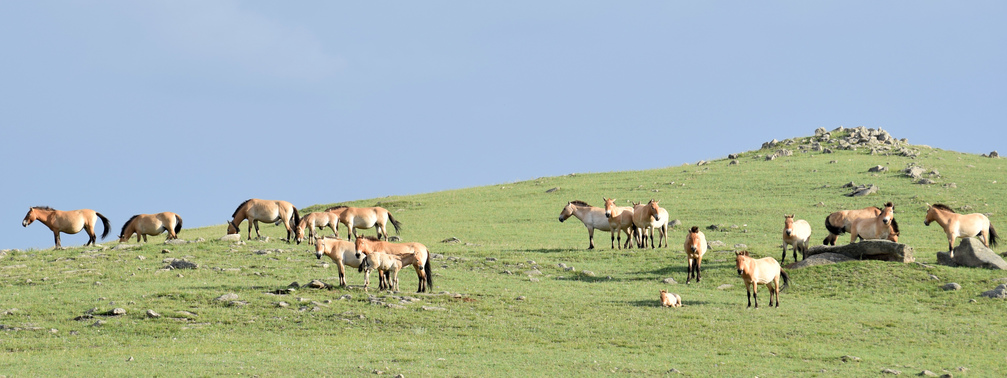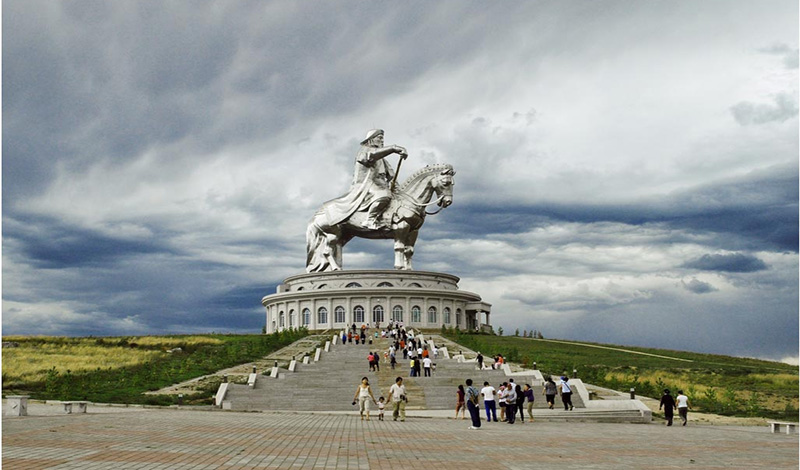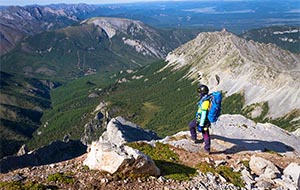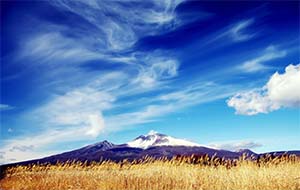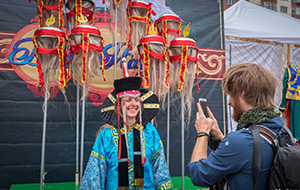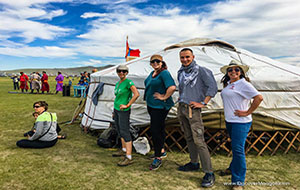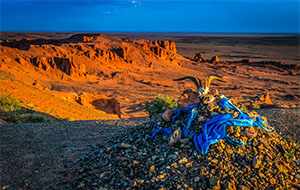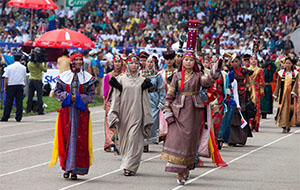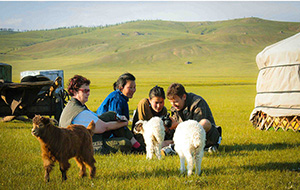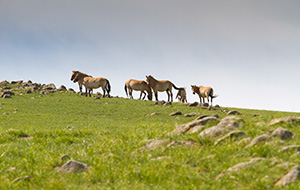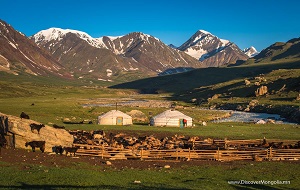Przewalski's Horse (Takhi)
The takhi is the star attraction of Khustai National Park, and the reason why the park was established in the first place. These horses are a unique breed of wild horses that were once found across the Eurasian steppes, but were hunted to extinction in the wild by the 1960s. However, a captive breeding program helped to save the species from complete extinction, and today, Khustai National Park is home to a thriving population of takhi. Visitors to the park can witness these majestic creatures in their natural habitat, grazing on the vast grasslands of the park. The takhi are a symbol of Mongolia's rich cultural heritage, and they play an important role in the ecosystem of the park.
Gobi Bear
The Gobi bear, also known as the Mazaalai, is a rare subspecies of brown bear that is found only in the Gobi Desert of Mongolia. The Gobi bear is smaller in size than other brown bears, with a distinctive pale yellow color that helps it blend into the desert landscape. The bear has been listed as critically endangered by the International Union for Conservation of Nature (IUCN) since 1970, and there are estimated to be fewer than 50 individuals left in the wild. Khustai National Park is one of the few places where the Gobi bear can be found, and efforts are being made to protect this endangered species.
Red Deer
The red deer is a common species of deer that can be found across Europe, Asia, and North America. In Khustai National Park, the red deer population is thriving, thanks to the park's protected status. The deer can be seen grazing on the grasslands, and visitors can also witness their impressive antlers during the mating season. Red deer are an important prey species for the park's predators, including wolves and lynx.
Wolf
The wolf is one of the most iconic predators of the Eurasian steppes, and Khustai National Park is home to a healthy population of these apex predators. Wolves are highly social animals that live in packs, and they play an important role in regulating the park's ecosystem. Visitors to the park may hear the haunting howls of the wolves at night, or catch a glimpse of them hunting for prey during the day.
Lynx
The lynx is a medium-sized wild cat that is found across Europe and Asia. The Eurasian lynx is the largest of the lynx species, and it can be found in Khustai National Park. The lynx is a solitary predator that hunts at night, and it feeds primarily on small mammals such as hares and rodents. The park's lynx population is relatively small, but efforts are being made to monitor and protect this elusive species.
Marmots
Marmots are large ground squirrels that are found across Eurasia and North America. In Khustai National Park, the Siberian marmot is a common species that can be seen basking in the sun on the park's grasslands. Marmots are important prey species for predators such as wolves and lynx, and they also play an important role in the park's ecosystem by aerating the soil and providing food for other species.
Wild Boar
The wild boar is a common species of pig that is found across Europe and Asia. In Khustai National Park, the wild boar population is thriving, thanks to the park's protected status. The pigs can be seen rooting around for food on the park's grasslands, and they play an important role in the ecosystem by spreading seeds and aerating the soil.
Birds
Khustai National Park is home to over 170 species of birds, making it a haven for birdwatchers. The park's wetlands and grasslands provide important habitat for migratory birds such as the great egret, black stork, and whooper swan. Other notable bird species that can be found in the park include the Eurasian eagle-owl, saker falcon, and Siberian rubythroat.
Conservation Efforts
Khustai National Park is an important conservation area that plays a vital role in protecting Mongolia's rich biodiversity. The park's primary goal is to conserve the takhi, but it also serves as a sanctuary for a wide range of other species. The park's management team works closely with local communities to promote sustainable tourism and conservation practices, and to provide employment opportunities for local people.
In addition to protecting wildlife, the park also plays an important role in preserving Mongolia's cultural heritage. The takhi is an important symbol of Mongolian culture, and the park's museum and research center provides visitors with insights into the history and culture of the takhi and the surrounding ecosystem.
Visiting Khustai National Park
Khustai National Park is a popular destination for nature lovers and wildlife enthusiasts. The park is open year-round, but the best time to visit is between May and October, when the weather is mild and the wildlife is most active. Visitors can participate in a range of activities, including horseback riding, hiking, birdwatching, and wildlife viewing.
Accommodation options in the park include traditional Mongolian yurts, or gers, as well as campsites for those who prefer to sleep under the stars. Visitors can also sample traditional Mongolian cuisine, including dishes made with locally sourced ingredients such as yak and goat.
Conclusion
Khustai National Park is a haven for wildlife conservation in Mongolia, and it plays an important role in protecting the country's rich biodiversity. From the majestic takhi to the elusive lynx, the park is home to a diverse range of animal species that make it a must-visit destination for nature lovers and wildlife enthusiasts. With its stunning landscapes, rich cultural heritage, and commitment to conservation, Khustai National Park is a true gem of the Eurasian steppes.









